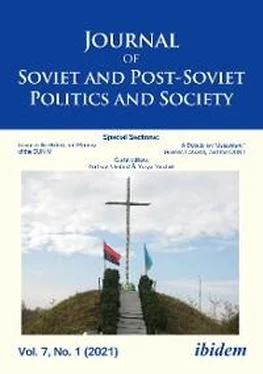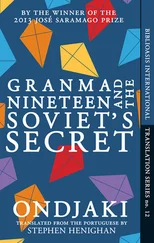By August 1944, the dragnet operations covered the entire Volhynia, and subsequently, as the Red Army moved on, they covered consecutive regions of Eastern Galicia. On 7 August 1944, having received intelligence information from “active participants in the UPA,” the Soviets found out that a major UPA group was operating in the Kariv Forest and in Piddubtsi (now in Volyns’ka oblast’)—it was composed of up to 1,400 individuals including around four hundred who were well-armed and dressed in German uniforms. At dawn on 29 August, a specially formed operational group of at least seven hundred NKVD soldiers (from the Internal Troops and the Border Troops), additionally backed by Red Army units, encircled the Kariv Forest. 13Heavy fighting lasted all day. When fighting was discontinued overnight, the guerrilla fighters used the opportunity, splitting into small groups and “permeating” through the Soviet lines. In the morning, the dragnet operation was resumed, but only very small groups of guerrilla fighters remained in the encircled area; these were eliminated one by one. The Soviets estimated the Ukrainian losses at 625 individuals killed. They themselves admitted to having lost as many as thirty-two soldiers killed and another forty-eight wounded, with one soldier missing. 14The estimates provided by the guerrilla fighters were totally different. According to figures provided by the UPA, a mere ten guerrilla fighters were killed and around twenty wounded. Two UPA fighters were taken prisoner. 15
In November 1944, the Soviets decided to modify the principles of their anti-guerrilla operations and to adopt a new method, the so-called “blocking” method (blokada) , against the guerrillas. From then on, the entire area covered by a dragnet operation was to be divided into ten to fifteen sections, each containing two to three villages. Each of these sections was to be “taken care of” by a company of NKVD troops responsible for fighting the underground (comprising 80–120 men). The operation was to be launched in all locations simultaneously. First, all residents were to be gathered in one place and anyone who might have “wronged the Soviet authorities” was categorically requested to identify themselves. Next, the NKVD soldiers were to thoroughly search all houses and outbuildings one by one. They were instructed to look for any potential entries to shelters and hide-outs. A single farmyard could even be searched several times. The soldiers were accompanied by party activists, who organized propaganda meetings and collected outstanding in-kind contributions. Show trials and executions carried out on the spot were to boost the propaganda message. A dragnet operation of this type was to last uninterruptedly for five to seven days. 16
Between 29 December 1944 and 4 January 1945, most likely the first such operation according to the new scheme was carried out by the 19th Brigade of the NKVD Internal Troops, which “cleansed” the Rohatyn area in Stanislav oblast’. The success of the experimental use of the blocking method in Ukraine encouraged the Soviets to use it in other republics of the USSR as well, including the Baltic states. Official recommendations regarding the use of this method came from Lieutenant General Moisei Sladkevich, deputy commander of the NKVD Internal Troops. His order no. 19/10-00114 issued on 17 February 1945 contained detailed instructions as to how such operations should proceed. 17
At the beginning of 1945, Soviet dragnet operations reached the Carpathian Mountains. Between 18 January 1945 and 10 February 1945, in Stanislav oblast’ 1,678 “criminals” were killed and 1,716 were captured, 4,820 emerged from the underground, having appeared before special amnesty committees, ninety-nine farmers were subject to repression for offering support to the guerrilla movement, and 1,115 bunkers were destroyed. Between 24 January and 2 February, the Soviets carried out an operation in Halych district, which involved the 19th brigade backed by eighty-five activists. Seventy-five mass meetings were organized, among other actions. They were attended by ten thousand individuals. One hundred and five guerrilla fighters were killed and another 674 taken prisoner. 18
Between 12 and 24 March 1945, the 19th Brigade carried out a chekist-military operation in the raions of Tlumach and Tysmenytsia (Stanislav oblast’). Starting at dawn on 12 March, 850 soldiers divided into thirteen combined companies thoroughly searched around seventy villages and khutors (small villages). Concurrently, political officers spread their propaganda message during meetings with the local population organized by the NKVD. During the operation, 266 guerrilla fighters were killed and another 798 captured; 269 individuals were accused of supporting the underground movement and arrested. Three deserters were detained alongside 207 individuals evading military service. Another 1,347 individuals identified themselves voluntarily as wrong-doers. Fifty-nine “criminal” families—a total of 142 individuals—were displaced. Four hundred and thirty-eight shelters containing food and other provisions were found (some of them had been set up by farmers in order to hide their produce and assets so as to avoid the obligation to provide the required in-kind contribution) alongside fourteen shelters with arms. During the operation, there were ten minor clashes with UPA fighters in which the NKVD lost three soldiers killed and another four wounded. 19
The operation carried out on 21 March 1945 near the village of Sadzhava in Bohorodchany raion, Stanislav oblast’, was a major success for the Soviets. It involved a violent confrontation of an UPA kuren (the equivalent of a battalion) known as “Smertonostsy” with an NKVD unit. 110 insurgents were killed. Another operation in Stanislav oblast’ was carried out between 17 and 29 April 1945. It covered the difficult mountainous areas of Zhabe, Yabluniv, Kuty, Zabolottya, Kolomyia, Yaremche raions. Two UPA kurens were stationed there (including the one led by “Nedobity”) together with nine training sotnias (squadrons). According to the Soviets, the operation triggered panic among the guerrilla fighters. The units scattered and moved on in small groups. 547 “criminals” were killed, 2,502 were captured, and 1,745 individuals identified themselves. The Soviets lost two soldiers killed and another twenty-six wounded. 20
The operations carried out by the Soviets in winter 1945 decimated the Carpathian UPA units. They were also intended as a signal that the Soviet leadership was not going to leave even the most remote areas unattended. Once a wave of major cleansing and blocking operations swept through the region, the NKVD tried to “saturate” the area covered by guerrilla fighter activity with Reconnaissance-Pursuit Groups (RPG) which patrolled the area, organized ambushes in locations where guerrilla fighters were likely to appear, and also covered those officers who contacted their spy network. Deployment of small garrisons of NKVD troops in bigger towns enabled the pursuit groups to chase guerrilla fighters whenever these carried out their actions; some of these groups were specially appointed to fight specific units. The use of dogs was recommended during such pursuit. Throughout this period, based on information provided by spy networks, targeted operations to eliminate the spotted guerrilla fighters were being carried out as well.
Frequent NKVD dragnet operations forced the guerrilla fighters to remain constantly vigilant. They made some fighters doubt in the prospects of victory. In addition, they forced the fighters to operate in small groups only—this, in turn, enabled the Soviets to send smaller sub-units, which were constantly maneuvering in this area, to carry out operations against guerrilla fighters. Although most of these operations (and there were literally thousands of them) failed to bring any positive results, they triggered constant tension in the areas “infected with criminal activity.”
Читать дальше












